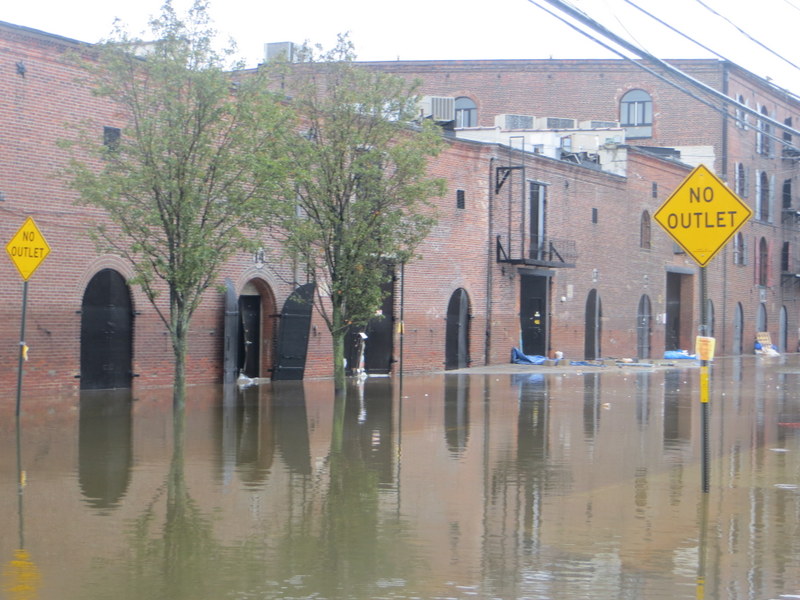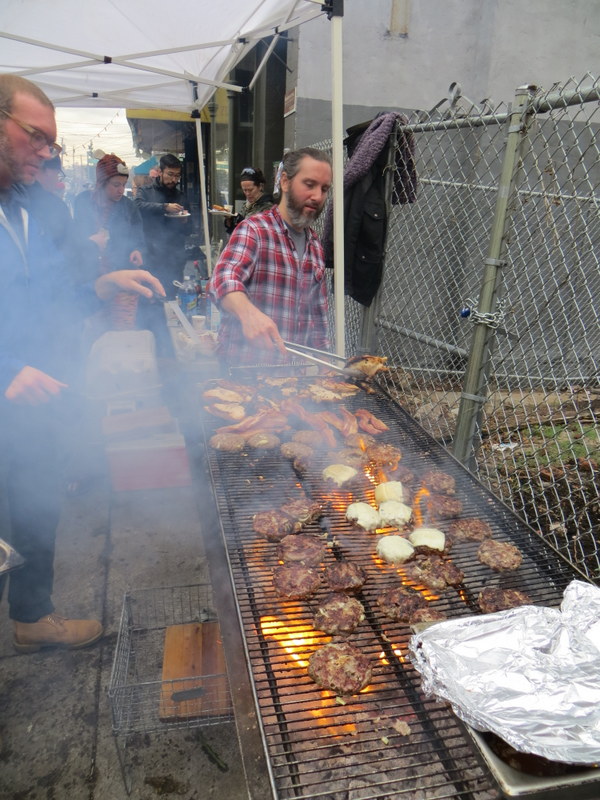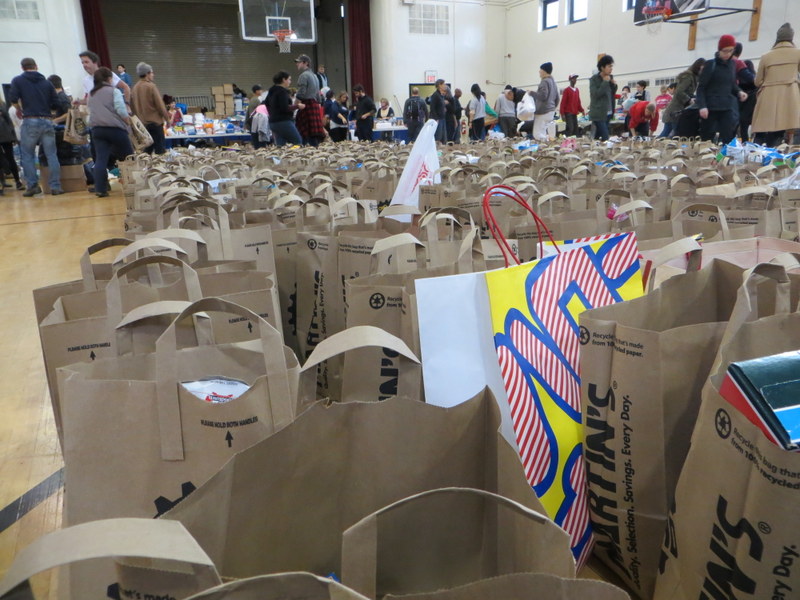
“I remember when the rain started to pick up, and the winds began getting strong, thinking, ‘This is gonna be worse than Irene…’ ”
“My daughters screamed out, ‘Look at the water!’ I ran to the window and saw a river floating down Van Brunt Street. There was a Porsche floating by with people in it. I was in shock immediately. I looked out the other window and saw the water was up to the door handle of my Ford Explorer. The whole atmosphere was completely unsettling.”
“My friends were telling me, ‘You’re crazy, you have to get outta’ there.’ But I didn’t want to leave my shop. So I stayed.”
Our Sandy anniversary issue is out on the streets now. Here is an article from it.
“I called my brother to come over and he helped me sandbag the area around my house. Then we headed up to the roof to secure loose objects because they were warning the winds were going to reach 80 miles per hour. I remember looking out the window as the streets began to fill with water and saying to my wife, ‘We need to get the cars out of here.’ ”
“I began to hear explosions, and at this point we lost all electricity and heat. There was water everywhere.”
“I decided to stay where I was because I have an 80 year old mother who I couldn’t move. There was 4 feet of water in the basement. We had to get rid of everything. I remembered the storm warnings for Irene and it wasn’t a big deal so I figured this was gonna be the same thing; I thought, ‘We’ve survived a million storms.’ ”
“The next morning when I woke up I went outside and just stood there staring; it looked like Armageddon.”
“The day after was even worse, coming into my shop and seeing all the debris inside, I couldn’t believe the damage, everything in the basement was lost- personal stuff, work things. I can’t even say it was ‘unbelievable.’ It was just numbing, not knowing what to feel, what we were gonna do. Then the days after were freezing, no electricity. The most upsetting part of it to me was the immediate outpouring of tourists that seemed to be taking pictures of other people’s misery. That really bothered me. I did see good things too though, the good, the bad, and the ugly.”

“My neighbor had a lot of issues because her family had been in the house for 100 years and she wound up losing a lot of their stuff. Her grandparents belongings were all destroyed.”
“People began to pull together immediately. Early the next morning just a few hours after the storm had ended, Bait & Tackle began serving food. Various organizations and people from the neighborhood began distributing food. Neighbors began checking on neighbors.”
“We were almost halfway through the construction of the new restaurant. When I walked into the space the day after the storm and saw the damage done– I felt bulldozed. Everything was gone; there was about $40,000 in damages. I didn’t start fixing it up for a few weeks. It was a somber time for us. I decided to use my BBQ cooker to cook meat donated to me for my neighbors throughout the aftermath of the storm. For us it was the only way to cope.”
“The response from regular citizens, religious groups and civic organizations, was tremendous. People were coming from all over – from as far as Louisiana – and they knew what was going on, these people were handy. When they came in, I was shaking. They calmed us down. They did in three hours what would have taken us a week to do. I got so emotional seeing all these people coming out to offer me and my friends and neighbors help. This storm, it really brought out the best in people. It allowed people to show their humanity to their neighbors.”
“During the cleanup someone brought, out of the mud, a silver bowl that was from my mother’s wedding. I still remember that moment.”
“It was an ordeal. Having to jump through hoops for money and resources. Trying to get yourself back on your feet. It’s an experience I certainly don’t want to go through again. If another storm comes like that I’m packing up and leaving.”
“In the end it took me about 3 months to get back into my shop, redid the floors, poured cement. Now we are solid as rock-literally. After the storm I was too busy getting my own place back together, but now that I’m back in business, I wanna give back and can offer any Sandy relief organizations discounts on shirt printing. This is what I have to give being a small business.”
“I was born and raised here; my family’s been here since before the BQE went up. That is one of the reasons I really wanna succeed in Red Hook. It’s like completing a legacy for me. I’ve seen the good, the bad – everything out here. Watched the neighborhood change. I was here for the crack epidemic, I was here before this thing got changed, I wasn’t about to leave for a storm.”

“I decided I wanted to do something to help with the recovery for my friends and neighbors. I remember sitting with others in Bait & Tackle lit only by candles and Christmas lights watching the heat leave our bodies. It was here I had the idea of offering commemorative Sandy tattoos. The idea soon snowballed into holding an art auction to raise money for hurricane relief. I rented a local art gallery and gave tattoos in the space while artwork was being auctioned off. It was great, we were able to raise around $12,000 for relief funding. I had artist friends who I hadn’t seen in years, but when I called them up about the event they dropped everything they were doing to create a piece of art for our auction. It was something.”
“Red Hook was the only storm-torn area of the city whose crime rate after the hurricane actually went down instead of up. I felt that was very indicative of the character of the neighborhood.”
“After the damage done to our restaurant space, I think people thought we were going to leave. But I couldn’t abandon this vision I had of opening my business here and making it a place that people would come to from all over the Tri-State area. Every community member helped us. After seeing how people in this neighborhood pulled together during the storm. There is no other place I’d rather be in business.”
“I have witnessed that this is what people do for each other in this neighborhood. They are there for one another. Period.”
Thanks to all who shared their stories: John McGettrick, Ethan Morgan, John Dough, Billy Durney, Richard Flanigan, Timothy J. Murphy








